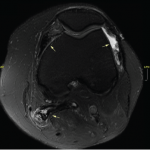Although PD-1 shares 17% homology with CTLA-4, it lacks that extracellular cysteine residue required for covalent dimerization, and it is monomeric on the cell surface, Dr. Boussiotis said. It also lacks the MYPPY motif seen on CTLA-4, which confers interaction with B7-1 and B7-2 cells, and the SH2- and SH3-binding motifs seen on the cytoplasmic tails of CTLA-4. Instead, PD-1’s cytoplasmic domain contains two immunoreceptor tyrosine-based switch motifs that are PD-1’s key regulators, ITIM and ITSM. The recruitment of SHP2 and, potentially, SHP1, are mandatory for PD-1-mediated inhibitory function, and “only in the context of co-ligation do you see SHP2 recruitment,” she said.
Findings from various laboratory studies suggest that PD-1 mediates protection from immune-mediated tissue damage through the initiation of a feedback-negative pathway, Dr. Boussiotis said. PD-1 regulates the generation and expansion of self-reactive T cells and protects targeted tissue damage. Splice variants of PD-1 have been identified, and one may be a key regulator of autoimmunity in factor-negative RA, she said. Research has focused on 50 different PD-1 polymorphisms and their role in the clinical presentation and progression of rheumatic diseases, such as RA, SLE, lupus nephritis and ankylosing spondylitis.
There are two probable approaches for therapeutic use of CTLA-4 and PD-1, Dr. Boussiotis said. Antagonists might block their inhibitory function and enhance the immune response in cancer or chronic infections. Agonists might take advantage of their inhibitory responses and be put to use in autoimmune diseases, graft rejection and graft vs. host disease, she said. In the context of rheumatic diseases, the goal is to activate their mediated inhibition of aberrantly activated, autoreactive T cells, she said. Targeting CTLA-4 might increase the activation threshold and prevent the generation of effector cells. Targeting PD-1 might restrain the expansion of antigen-specific effectors, primarily in nonlymphoid organs.
A great deal of research is needed to reach these important goals, Dr. Boussiotis said. Both CTLA-4 and PD-1 may represent truly novel approaches to induce the quiescence of autoreactive T cells in many rheumatic diseases and one day help prevent autoimmunity.
Susan Bernstein is a freelance medical journalist based in Atlanta.
Second Chance
If you missed this session, it’s not too late. Catch it on SessionSelect.

